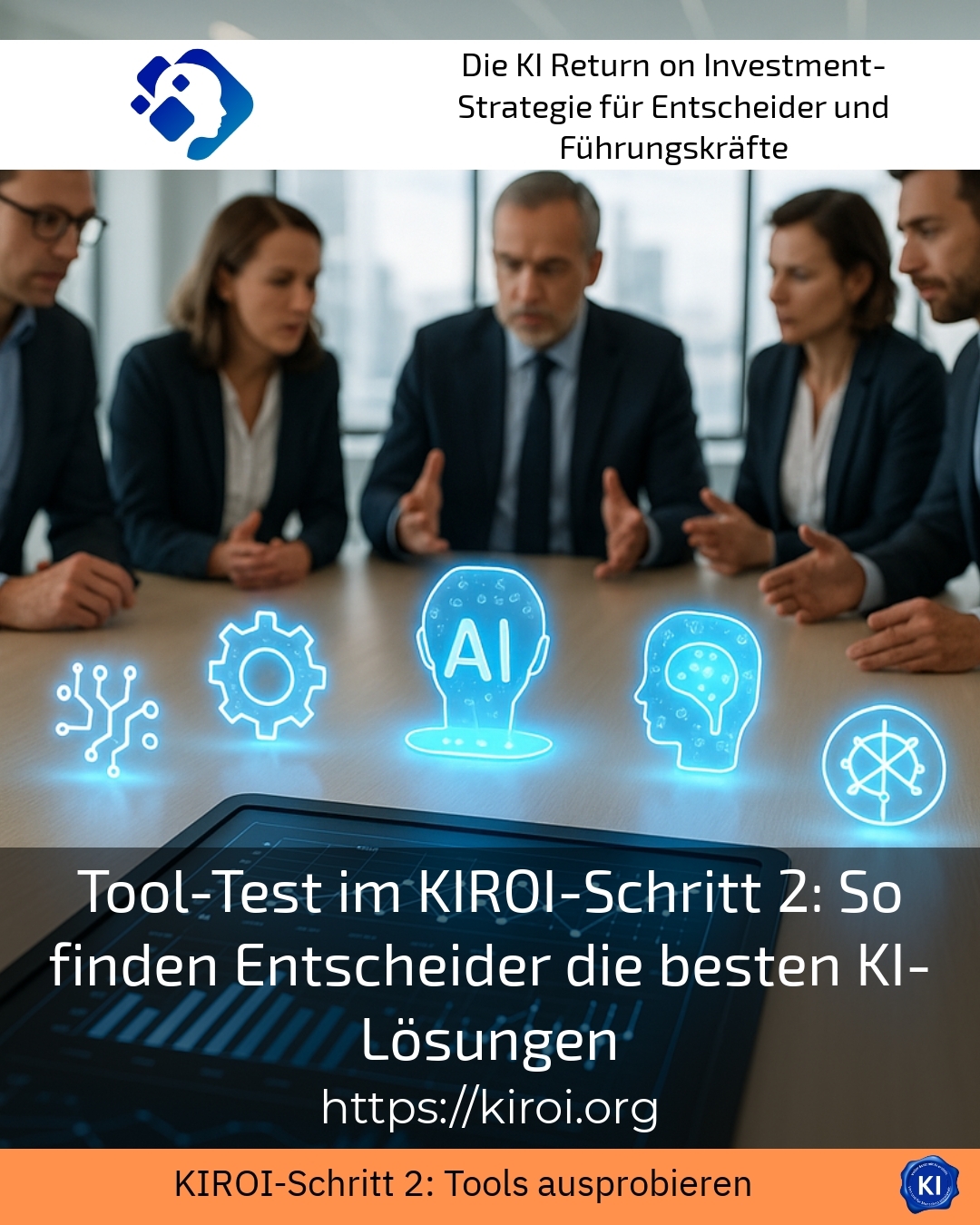The tool testing process in KIROI Step 2 is a crucial step in the selection of innovative AI solutions for companies. Many managers are faced with the challenge of finding the right tool from a wide range of options. Without clear criteria and a structured approach, a lot of time and energy is at risk of being lost. The tool test always begins with a precise analysis of the requirements and the definition of specific use cases[1].
Structured tool test for success
A structured tool test is more than just a quick look at functions; it is an iterative process that enables continuous learning. The second step of the KIROI process in particular shows how crucial a structured approach is for reducing uncertainties and identifying customised tools[2]. Decision-makers are faced with the challenge of choosing the best tool from a variety of options that is not only technically convincing, but also fits the team and the processes.
A successful tool test depends on transparency, communication and a willingness to learn. This is the only way to find the right solution and anchor it in the company in the long term. This includes the involvement of relevant stakeholders, the documentation of all steps and results as well as the use of external impulses and coaching to professionally support the process[2].
Tool test and user-friendliness
A tool test should always focus on user-friendliness and integration. After all, new solutions can only fulfil their potential if they are intuitive to use and fit into everyday working life. It is therefore advisable to involve specialist departments and end users in the test process at an early stage[1]. Feedback is collected systematically and documented transparently in order to compare strengths, weaknesses, integration effort and costs.
Many companies report that the effectiveness of a tool increases significantly with regular use and targeted customisation. A tool test is therefore not a one-off event, but develops into a continuous optimisation process. External coaches often contribute to supporting companies in the structured selection and integration of AI tools through transruption coaching.
Practical examples in the KIROI process
A medium-sized company from the technical services sector saw considerable added value in a tool focussing on competitive analysis and keyword gap analysis. The company was able to improve its position against competitors in a targeted manner and identify gaps in its own strategy. The tool test provided decisive impetus for the development of the digital strategy and led to marketing activities becoming measurably more efficient[1].
BEST PRACTICE with one customer (name hidden due to NDA contract)Another company used the KIROI process to test AI-supported tools in the area of customer service automation. The structured approach made it possible to significantly increase the efficiency of service processes by shortening response times and increasing user satisfaction. The tool test resulted in better utilisation of employee capacity and increased customer satisfaction.
Tips for a successful tool test
Start with a clear definition of objectives in order to organise the tool test in a targeted manner. Involve all relevant stakeholders at an early stage to increase acceptance and practical relevance. Document all steps and results in order to create a comprehensible basis for decision-making. Allow sufficient time for pilot phases, as many questions only become clear in real use[2].
My analysis
The tool test is not an end in itself, but a central building block for sustainable digitalisation projects. It helps to minimise investment risks, optimise processes and promote innovation in a targeted manner. Practical experience shows this: Those who take the tool test seriously and approach it in a structured way will benefit from better results and greater acceptance within the team in the long term.
Further links from the text above:
KIROI step 2: Unleash AI potential with the tool test
Tool test for decision-makers: successfully mastering KIROI step 2
For more information and if you have any questions, please contact Contact us or read more blog posts on the topic Artificial intelligence here.















